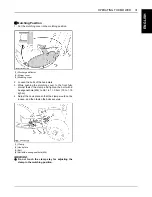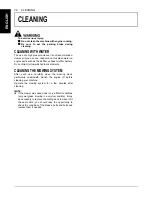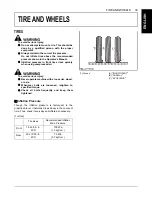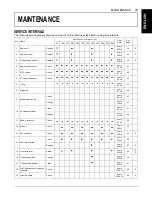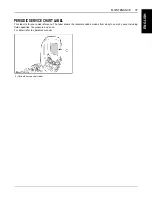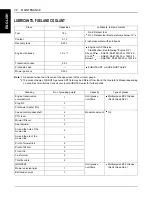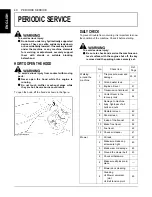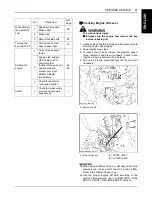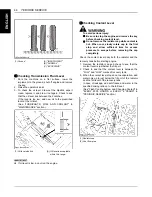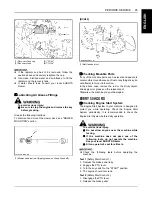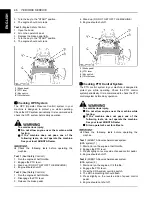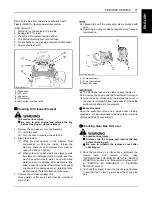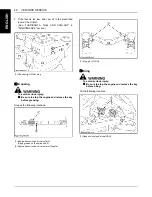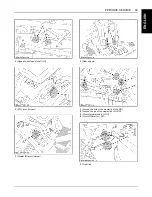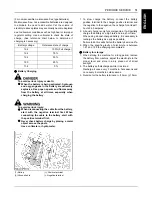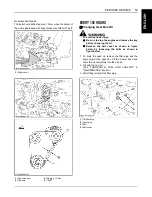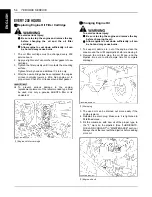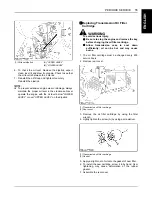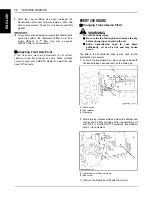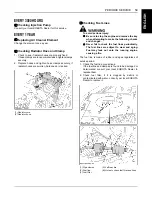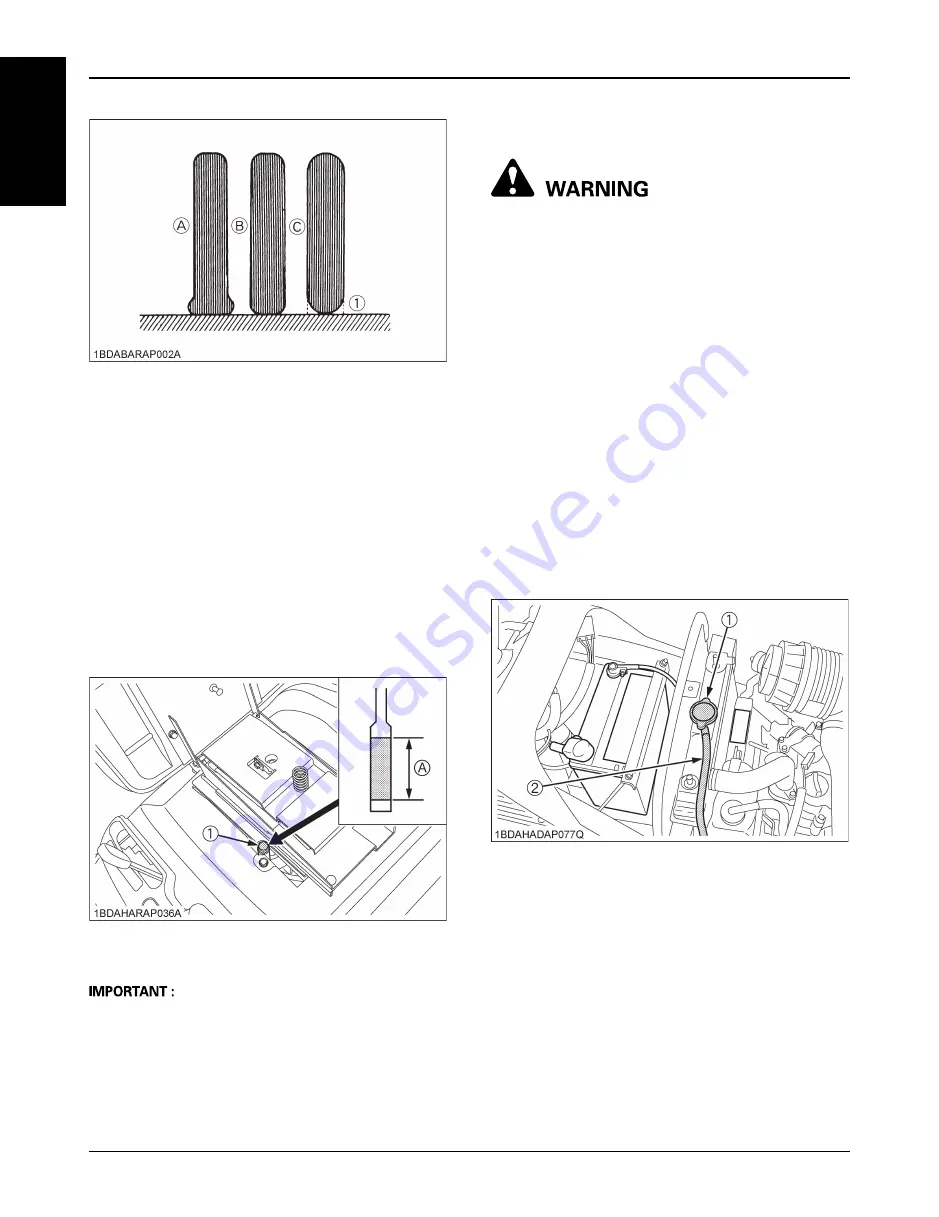
PERIODIC SERVICE
44
ENGLISH
B
Checking Transmission Fluid Level
1. Park the machine on a flat surface, lower the
implement to the ground, shut off engine and remove
the key.
2. Raise the operator's seat.
3. To check the oil level, draw out the dipstick, wipe it
clean, replace it, and draw it out again. Check to see
that the oil level lies between the 2 notches.
If the level is too low, add new oil to the prescribed
level at the oil inlet.
(See "LUBRICANTS, FUEL AND COOLANT" in
"MAINTENANCE" section.)
A
If oil level is low, do not run the engine.
B
Checking Coolant Level
To avoid serious injury:
A
Be sure to stop the engine and remove the key
before checking coolant level.
A
Do not remove the radiator cap while coolant is
hot. When cool, slowly rotate cap to the first
stop and allow sufficient time for excess
pressure to escape before removing the cap
completely.
Check the coolant level daily both the radiator and the
recovery tank before starting engine.
1. Remove the radiator cap and check to see that the
coolant level is just below the fill port.
2. Check to see that the coolant level is between the
"FULL" and "LOW" marks of recovery tank.
3. When the coolant level drops due to evaporation, add
water only up to just below the fill port of the radiator
and the full level of the recovery tank.
In case of leakage, add anti-freeze and water in the
specified mixing ratio up to the full level.
(See "Flush Cooling System and Changing Coolant" in
"EVERY 2000 HOURS or EVERY 2 YEARS" in
"PERIODIC SERVICE" section.)
(1) Ground
(A) "INSUFFICIENT"
(B) "NORMAL"
(C) "EXCESSIVE"
(1) Oil level dipstick
(A) Oil level is acceptable
within this range.
(1) Radiator cap
(2) Over flow pipe


